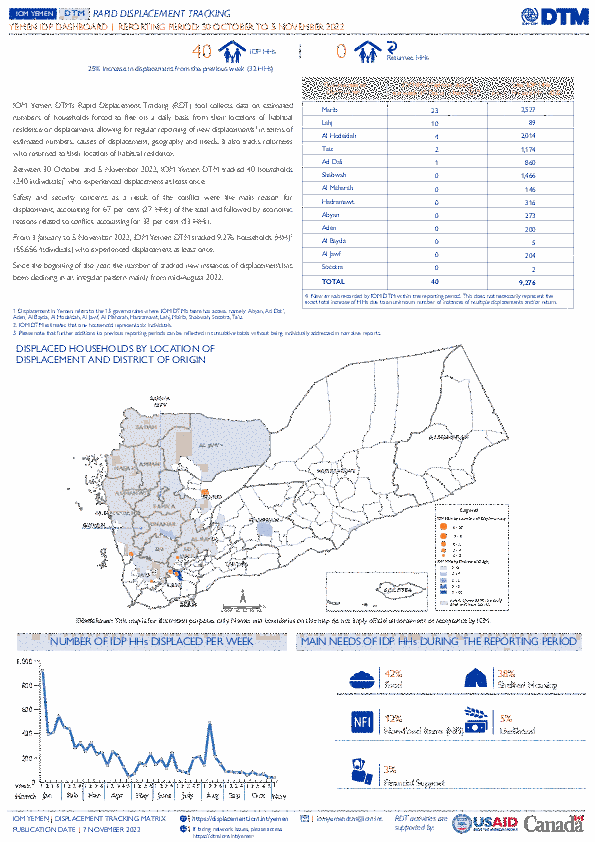-
Countries
-
Data and Analysis
-
Special Focus
-
Crisis Responses
Yemen — Rapid Displacement Tracking Update (30 October - 05 November 2022)

Contacter
DTM Yemen, iomyemendtm@iom.int
Langue
English
Emplacement
Yemen
Période couverte
Oct 30 2022
Nov 05 2022
Activité
- Rapid Emergency Registration
- Mobility Tracking
IOM Yemen DTM’s Rapid Displacement Tracking (RDT) tool collects data on estimated numbers of households forced to flee on a daily basis from their locations of origin or displacement, allowing for regular reporting of new displacements in terms of estimated numbers, geography, and needs. It also tracks returnees who returned to their location of origin.
From 1 January to 5 November 2022, IOM Yemen DTM tracked 9,276 households (HH) (55,656 Individuals) who experienced displacement at least once.
Between 30 October and 5 November 2022, IOM Yemen DTM tracked 40 households (240 individuals) displaced at least once. The majority of people moved into/within the following governorates and districts:
- Marib (23 HHs) – Marib City (16 HHs), Marib (7 HHs) districts. Most displacements in the governorate originated from Shabwah and Marib.
- Lahj (10 HHs) – Al Musaymir (10 HHs) district. All displacements in the governorate were internal.
- Al Hodeidah (4 HHs) – Hays (4 HHs) district. Most displacements in the governorate originated from Al Hodeidah and Taiz.
The majority of people moved from the following governorates and districts:
- Lahj (11 HHs) – Al Musaymir (11 HHs) district.
- Al Hodeidah (5 HHs) – Hays (3 HHs), Al Marawiah (2 HHs) districts.
Shabwah (4 HHs) – Ataq (3 HHs), Bayhan (1 HH) districts.
